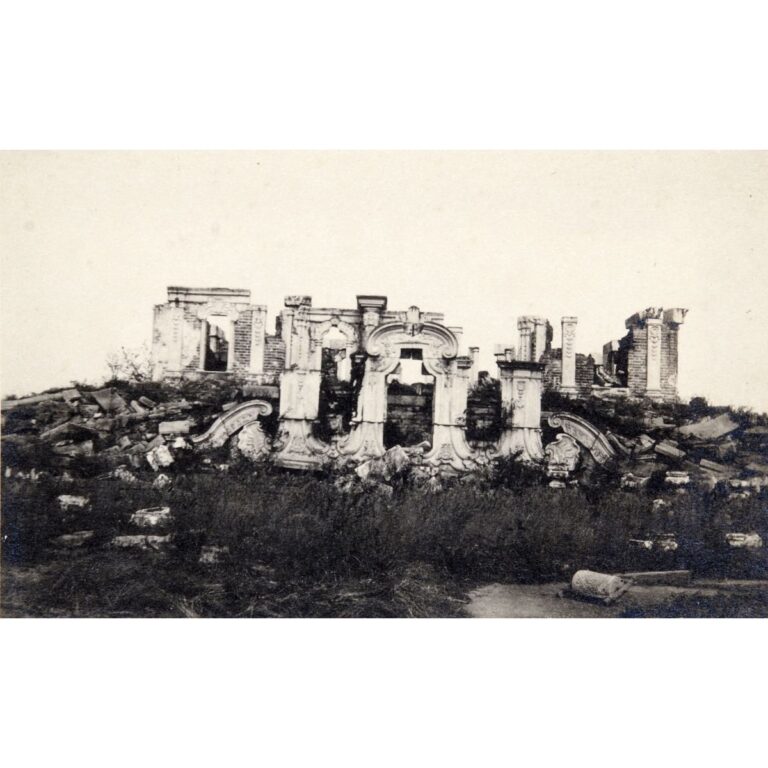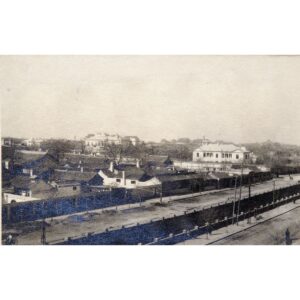Photography Pavilion Dashuifa Ruins in the Old Summer Palace
A black-and-white photograph showing a printed image of one of the baroque triumphal arches or portals in the area The Old Summer Palace (Yuanmingyuan 圓明園) in Beijing called Xiyanglou 西洋楼 or the “European Pavilions”. It was designed by the Jesuit Giuseppe Castiglione (1688–1766) in the European Baroque style.
It is part of the series of twenty copperplate engravings commissioned in 1783 by Emperor Qianlong (reigned 1735–1796) and printed three years later. The engravings, gathered in the work Twenty Views of European Pavilions in the Old Summer Palace, were made by the court artist and Castiglione’s pupil, Yi Lantai 伊兰泰 (1749–1786). The inscription in the upper right-hand corner states that this is the fifteenth image in the album. It shows the front view of the façade with large fountains (dashuifa 大水法).
An expression of heaven on earth, the Old Summer Palace housed thousands of priceless treasures and works of art. Its ... more
A black-and-white photograph showing a printed image of one of the baroque triumphal arches or portals in the area The Old Summer Palace (Yuanmingyuan 圓明園) in Beijing called Xiyanglou 西洋楼 or the “European Pavilions”. It was designed by the Jesuit Giuseppe Castiglione (1688–1766) in the European Baroque style.
It is part of the series of twenty copperplate engravings commissioned in 1783 by Emperor Qianlong (reigned 1735–1796) and printed three years later. The engravings, gathered in the work Twenty Views of European Pavilions in the Old Summer Palace, were made by the court artist and Castiglione’s pupil, Yi Lantai 伊兰泰 (1749–1786). The inscription in the upper right-hand corner states that this is the fifteenth image in the album. It shows the front view of the façade with large fountains (dashuifa 大水法).
An expression of heaven on earth, the Old Summer Palace housed thousands of priceless treasures and works of art. Its beauty was known even beyond China.
The photograph is the 337th of 449 photographs of Beijing and its surroundings in the album of Ivan Skušek Jr., purchased during his stay in Beijing (1914–1920). In the handwritten inventory of the album, the photograph is referred to as Yüen-Ming-Yüen: Thron-Halle (gegenwärtig) . (DZ, MV)



































Do you have a comment or additional information about the subject?